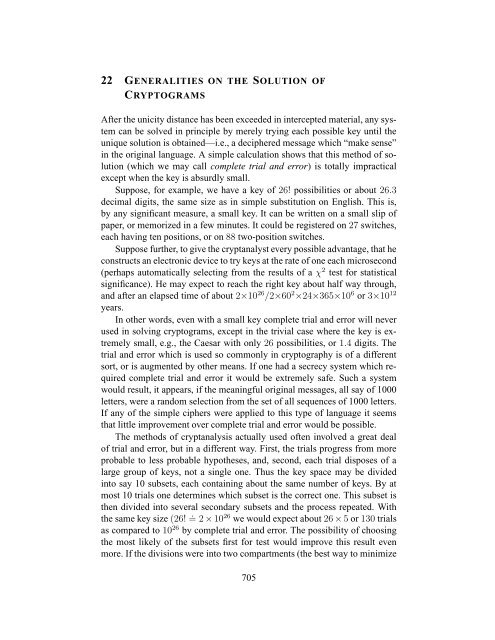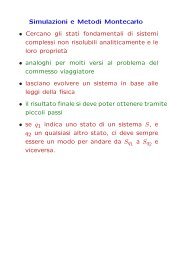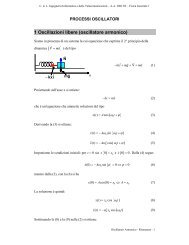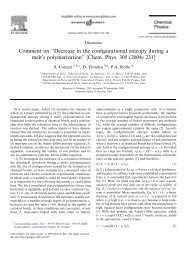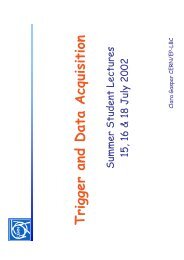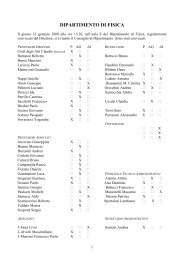Communication Theory of Secrecy Systems - Network Research Lab
Communication Theory of Secrecy Systems - Network Research Lab
Communication Theory of Secrecy Systems - Network Research Lab
Create successful ePaper yourself
Turn your PDF publications into a flip-book with our unique Google optimized e-Paper software.
22 GENERALITIES ON THE SOLUTION OF<br />
CRYPTOGRAMS<br />
After the unicity distance has been exceeded in intercepted material, any system<br />
can be solved in principle by merely trying each possible key until the<br />
unique solution is obtained—i.e., a deciphered message which “make sense”<br />
in the original language. A simple calculation shows that this method <strong>of</strong> solution<br />
(which we may call complete trial and error) is totally impractical<br />
except when the key is absurdly small.<br />
Suppose, for example, we have a key <strong>of</strong> 26! possibilities or about 26.3<br />
decimal digits, the same size as in simple substitution on English. This is,<br />
by any significant measure, a small key. It can be written on a small slip <strong>of</strong><br />
paper, or memorized in a few minutes. It could be registered on 27 switches,<br />
each having ten positions, or on 88 two-position switches.<br />
Suppose further, to give the cryptanalyst every possible advantage, that he<br />
constructs an electronic device to try keys at the rate <strong>of</strong> one each microsecond<br />
(perhaps automatically selecting from the results <strong>of</strong> a χ 2 test for statistical<br />
significance). He may expect to reach the right key about half way through,<br />
and after an elapsed time <strong>of</strong> about 2×10 26 /2×60 2 ×24×365×10 6 or 3×10 12<br />
years.<br />
In other words, even with a small key complete trial and error will never<br />
used in solving cryptograms, except in the trivial case where the key is extremely<br />
small, e.g., the Caesar with only 26 possibilities, or 1.4 digits. The<br />
trial and error which is used so commonly in cryptography is <strong>of</strong> a different<br />
sort, or is augmented by other means. If one had a secrecy system which required<br />
complete trial and error it would be extremely safe. Such a system<br />
would result, it appears, if the meaningful original messages, all say <strong>of</strong> 1000<br />
letters, were a random selection from the set <strong>of</strong> all sequences <strong>of</strong> 1000 letters.<br />
If any <strong>of</strong> the simple ciphers were applied to this type <strong>of</strong> language it seems<br />
that little improvement over complete trial and error would be possible.<br />
The methods <strong>of</strong> cryptanalysis actually used <strong>of</strong>ten involved a great deal<br />
<strong>of</strong> trial and error, but in a different way. First, the trials progress from more<br />
probable to less probable hypotheses, and, second, each trial disposes <strong>of</strong> a<br />
large group <strong>of</strong> keys, not a single one. Thus the key space may be divided<br />
into say 10 subsets, each containing about the same number <strong>of</strong> keys. By at<br />
most 10 trials one determines which subset is the correct one. This subset is<br />
then divided into several secondary subsets and the process repeated. With<br />
the same key size (26! . = 2 × 10 26 we would expect about 26 × 5 or 130 trials<br />
as compared to 10 26 by complete trial and error. The possibility <strong>of</strong> choosing<br />
the most likely <strong>of</strong> the subsets first for test would improve this result even<br />
more. If the divisions were into two compartments (the best way to minimize<br />
705


